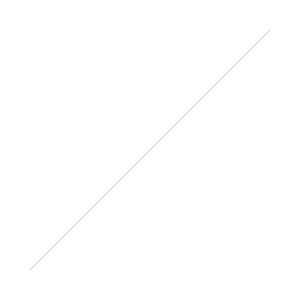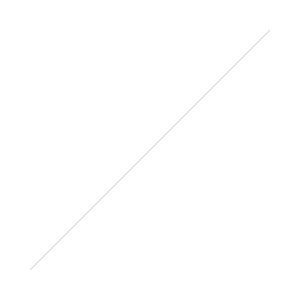
 Wyoming Barn, 5 x 7 inches, oil on panel, currently available for bid by clicking here.
Wyoming Barn, 5 x 7 inches, oil on panel, currently available for bid by clicking here.
I love small paintings. I love looking at the smaller work of other artists, and I love doing work in a small format. There is a gem-like quality to to small paintings, whether seen across the expanse of a museum hall, or tucked in a nook of a home. As you approach a small piece, it is almost as if the frame becomes a window into another reality.
I don't care much for photo-realism- at some point it seems to me to become more about rendering than anything else. I want that window to reveal the simplification and abbreviation of form that I find compelling, the way a painter interprets and transforms reality into a 2 dimensional plane.
I started posting on this blog months ago, in hopes of helping me process through some changes I felt were coming in my work. Well, I'm a slow processor, but I think I'm there- at the beginning of a new stage in the evolution of my work.
Learning, for me, comes from failure. Mistakes. Near misses, blunders, close-calls. Building a body of intuitive knowledge on which to make the infinite number of decisions required over the development of a painting. I have done hundreds of paintings over the years, slowly building the skill set to do.........what?
It's been months of stewing, but things are coming together, and it has come down to the same two questions I continually face.
1- Why?
2-How?
Second things first. Once I realized the why (I'll get to that in the next few posts), I knew I needed to work on the how. The way I work has evolved over the years. As a student, I wanted to be the next incarnation of Winslow Homer, of John Singer Sargent. The masters of painterly realism, of the spectacular brush-stroke. After may years as a student, trying to work in a style emulating one, then the other, my work evolved off in different direction. When I started working as an illustrator, I reinvented myself every time I turned around. Restlessness. Boredom. I said so at the time, but it was more a matter of trying to find the medium that matched me. I am not the painter of the perfect brush-stroke.
Squirting (kayaking) on the Middle Fork of the Salmon River. Yes, an older picture. I've been painting too much, not paddling enough. Sound like I need to make a New Year's resolution.
It took me a long time to realize, that I am most successful when I approach my work that way I approach life. A give and take, A conversation. And maybe, a sport. I have long joked that painting is centerfield for a guy who blew his knee in high school. But the truth is I would give up every baseball game I ever played to have started paddling whitewater sooner. No river is ever the same one day to the next. Water levels change, weather changes, stream banks and stream beds move and shift the current, and you have to react to each and every change. Rain, snowmelt, drought. Act and react. The same way I've come to paint. The only consistency is the inconsistency.
Small formats allow a painter to get work done more quickly- there just isn't as much work to do, as much surface to cover. And because more work is getting done, more mistakes are made, and more can be learned. But at some point, for whatever reason, you want to work bigger. And the techniques you've learned painting small can help you paint in a larger format, to a degree. But larger formats present their own problems.
 Red Roof, oil on canvas, 24 x 30 inches.
Red Roof, oil on canvas, 24 x 30 inches.
It is easy to see an increase in scale as an opportunity to include more detail, but for me, that dodges the real challenge of painting larger, which is to maintain the simplicity found in the smaller format. To enlarge the textures that make up the surface, while maintaining the integrity of the representational image. So, back to what I am after in a painting. Simplification and abbreviation of form. Color. Value. Surface quality. Up to a point this is relatively straight forward. Early on I would make the mistake of picking the wrong tool for the job, a too small brush making too small marks, resulting in a fussy, overworked surface. When you stop is as important as where you start. And you need the right tools to get there.
I think of the process of painting as laying veils of color over the canvas. Each veil is of different hue and value, broken-surfaced, revealing the layers beneath, eventually arriving at the final image. Paint is put down, and just as often removed. The surface texture is not something I try to describe verbally, or preconceive, but intuitively arrive at, hopefully at the same moment the image is finished.
But the other part of this is the why- not the why I paint this way, but the why I paint at all. And that lead me to want to work bigger yet. Previously I only occasionally went beyond 36 x 48 inches. This summer that started seeming restrictive. But so was my technique.
There is a reason houses are painted with brushes- a brush can make a nice, smooth surface. But that's not what I want. I'm after that broken veil. I tried a variety of brushes, of different sizes, and kept ending up with that fussy overworked surface. Painting knives were even worse.
And then in June, scrambling to finish a couple pieces to take with me to Cherry Creek, something happened. The tools evolved. And not the way I expected. Years ago, I started as a watercolorist- the easiest way in the world to become a brush junkie. I love good brushes, sables and hog bristles, mostly filberts for my oil painting work. Until in frustration I folded up a rag, and made a very crude brush of sorts, and found the surface I was after.
Yeah, so big deal. A wadded up rag. But the surfaces I am getting with the rag-brushes is the broken veil I am after, in a much larger format.
And the quote that started this off- If you can't do it well, do it big. The often repeated cynical critique








































